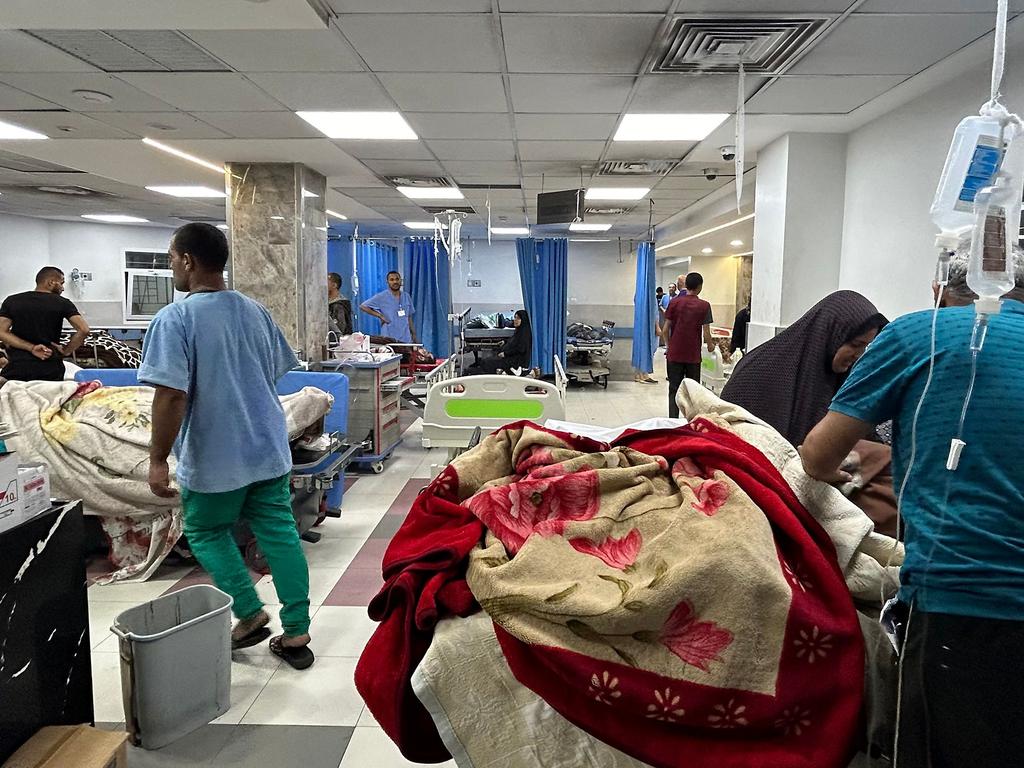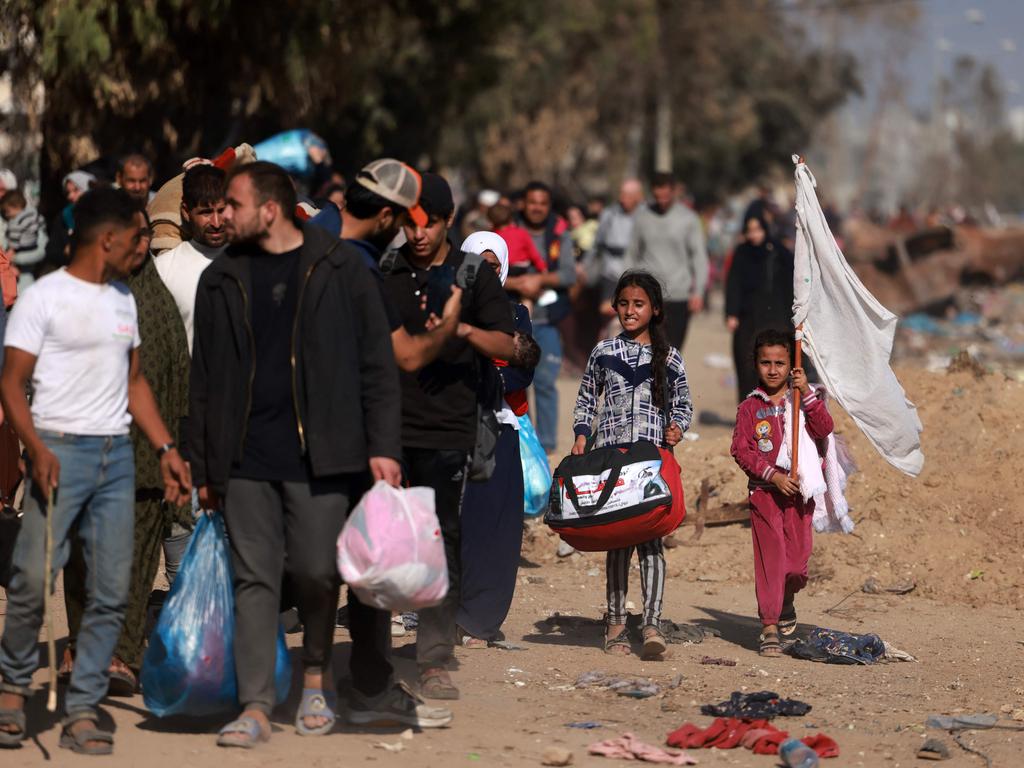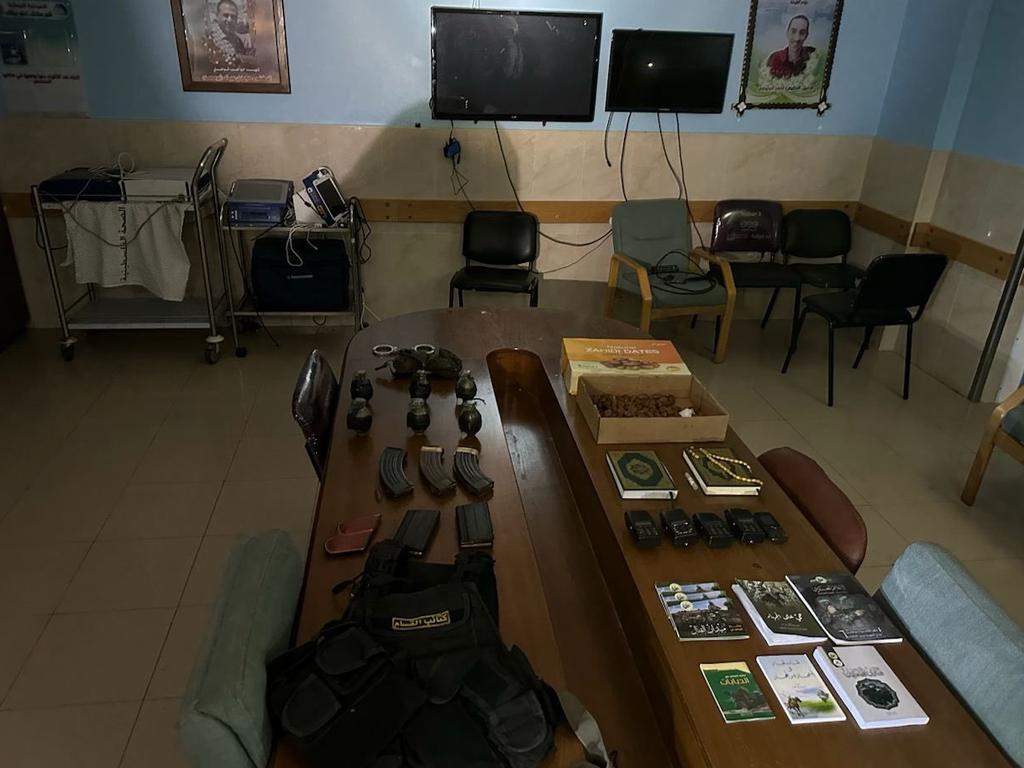Inside campaign to prove hospital was a Hamas command centre
The humanitarian fallout from the war has heaped pressure on Israel to justify its seizure of Al-Shifa Hospital.
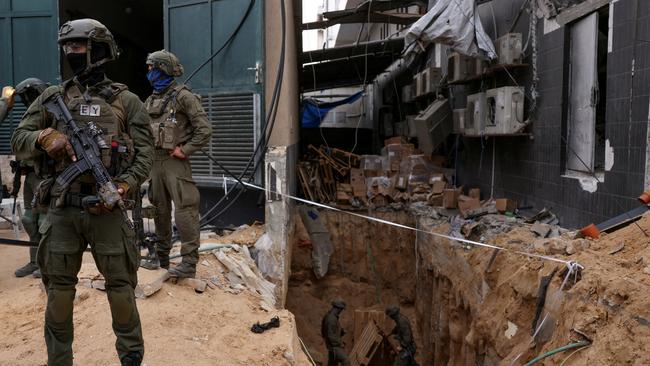
The Israeli military has stepped up its efforts to produce evidence that Gaza’s largest hospital was a Hamas command centre, as the humanitarian fallout from war and seizure of Al-Shifa Hospital has heaped pressure on Israel.
In recent days, the Israeli military has released a series of videos and photos from the hospital that show further details of a tunnel uncovered at the site and security-camera footage of two hostages who were brought there on October 7, the day Israel says Hamas militants killed more than 1,200 people in Israel and took more than 200 hostages back to Gaza.
On Tuesday, Lieutenant Colonel Jonathan Conricus, an Israeli military spokesman, said its troops were still inside Al-Shifa Hospital searching for Hamas’s tunnels and other evidence. He said the evidence released so far was just the beginning. “At the end of our search we will put everything on display for the world to see,” Conricus said.
Late Wednesday, the Israeli military released videos that it said showed a tunnel equipped with electric wiring, bathrooms, a kitchen and airconditioned rooms. The infrastructure was intended to accommodate Hamas fighters, the military said.
Hamas said the group didn’t use Shifa or other hospitals in Gaza for military purposes. A Hamas spokesman said Israel has besieged Gaza’s hospitals as part of an effort to break the will of Palestinians and push them off their land.
The stakes for Israel are high as it tries to maintain the support of allies, particularly the US, for its campaign to destroy Hamas. Its offensive has taken an increasingly devastating toll on the Palestinian population of Gaza, which is governed by Hamas — deemed a terrorist group by the U.S. and Israel. More than 13,000 people have been killed, according to Gaza officials, whose figures don’t distinguish between militants and civilians.

While many security analysts agree the latest evidence Israel has released increasingly suggests a Hamas presence at the hospital, most say they have yet to see something that constitutes a smoking gun showing it was a command centre for Hamas, as Israel has alleged.
Some security analysts said the videos released on Wednesday were some of the strongest evidence that Israel has released to support its claims. The videos show a “significant level of Hamas-built headquarters in and under the Shifa hospital complex backing up Israel’s and US intelligence claims,” said John Spencer, a retired US Army officer and chair of urban warfare studies at the U.S. Military Academy.
Others remain sceptical of the Israeli military’s claims. “They have not shown anything to suggest Hamas was using those premises any time recently, much less using them for military purposes, much less using them as a command-and-control centre,” said Paul R. Pillar, a non-resident senior fellow at Georgetown University’s Centre for Security Studies.
Pressure has mounted in recent days as the human impact of the hospital seizure has become more apparent. Images of premature babies evacuated from Al-Shifa and taken to Egypt have been shared widely online and broadcast on television screens worldwide. On Sunday, after an inspection of the hospital, the United Nations called it a “death zone.” Israeli military officials said they have created a safe route for those in Al-Shifa to evacuate. On Tuesday, about 700 people remained at the hospital, including patients, staff and people who were sheltering there, according to Gazan health authorities. The Palestine Red Crescent Society sent ambulances to evacuate more people on Wednesday.
Early Wednesday, Israel and Hamas agreed to free 50 civilian hostages held by militants in Gaza in return for the release of Palestinian prisoners from Israeli jails and a four-day pause in fighting.
The evidence Israel ultimately presents could matter in terms of how its actions on the battlefield are viewed under the international laws governing warfare. Hospitals are protected under international law, but they can lose their special status when they are actively being used for hostile acts toward the enemy.
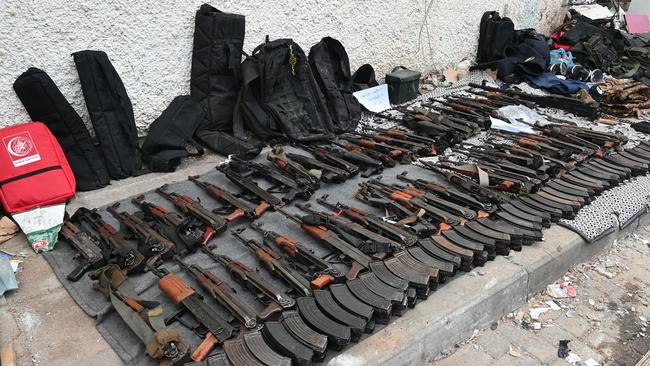
Israel is also competing in the court of public opinion and doing so in a world that is divided over the Gaza war. Every time Israel releases new material, some dismiss it as insufficient and others gobble it up as proof, particularly in Israel, said Mairav Zonszein, a senior analyst at the International Crisis Group. Ultimately, its most important audience may be the US or other Western allies. “Israel wants legitimacy in real time from the West,” she said.
Although Israel has made allegations that Hamas used Al-Shifa for years, it began building a larger and more detailed public case about the hospital in late October, nearly three weeks before it seized the facility on November 12.
Military officials put a 3-D animation on display in a briefing with reporters, showing Hamas avatars walking through a layered tunnel system underneath the hospital that was interspersed with what were described as command centres. It was a hypothetical illustration, however, not a real depiction of what was under the hospital, the Israeli military said.
Some of what Israel knows about Al-Shifa comes from its own work on the hospital. Israel renovated Al-Shifa decades ago when it occupied the Gaza Strip. Former Israeli officials have said those renovations included constructing underground floors to add sheltered accommodations for patients, a standard requirement for Israeli hospitals.
Hamas has connected those underground floors with tunnels that allow militants to move between them for command-and-control operations and to areas outside the hospital to mount attacks, said an Israeli military spokesman. A senior Israeli military official said Hamas’s underground infrastructure extended out into the vicinity of Al-Shifa as well.
After seizing the hospital, the Israeli military has been releasing its findings in batches. The Israeli military said it has done it that way, rather than waiting to do it all in one comprehensive presentation, in an effort to be transparent. Soldiers have to move slowly and methodically in their search to ensure that neither the soldiers nor the remaining patients and staff at the hospital are harmed by explosives Hamas may have left behind, the Israeli military and security experts said.
On November 15, the military first showed footage from the hospital’s MRI wing where it says it found AK-47s, grenades, military uniforms and a battle vest with the insignia of Hamas’s military wing. In a separate area, the military also said, soldiers found evidence of what the military described as a command-and-control centre, pointing to several hand-held radios, a laptop and a stack of CD-ROMs.
Israel said its soldiers also found a Toyota pickup truck that was packed with weapons, including rocket-propelled grenades, explosives and Kalashnikov rifles. The vehicle model is similar to those used by Hamas during its October 7 attack, the Israeli military said.
Security experts say some of Israel’s strongest evidence so far has come in recent days, when Israel released video that it said showed inside the tunnel and separate security footage that showed hostages being brought into the hospital on October 7.
Dear world, is this enough proof for you? pic.twitter.com/Z3HNDPNV3O
— Israel Defense Forces (@IDF) November 22, 2023
The video of the tunnel showed a shaft that the Israeli military said went 60 yards underground, leading into a vaulted cement-lined tunnel with electrical wiring. The Israeli military said the footage showed that the tunnel leads toward a metal blast door. The blast door also had a small hatch at its centre, which the military said was a hole designed to fire weapons from the inside at attackers.
The Israeli military said the video released on Wednesday showed what they found when they went beyond the blast door. The tunnel was similar to other ones built by Hamas, said Michael Horowitz, the head of intelligence at Le Beck International, a security and risk management consulting firm based in the Middle East.
“While the initial evidence released by the IDF was very limited, the recent evidence presented, including the tunnel inside the Al-Shifa compound, and the CCTV camera, are more significant,” said Horowitz, referring to the Israel Defence Forces, adding that he couldn’t detect any signs of tampering in the footage that had been released.
Hostages at the Hospital Israel also released security camera footage of what it said was a Nepalese and a Thai hostage being taken through the hospital hours after Hamas’s October 7 attack. One video showed men dragging one of the hostages through a hallway, while another showed a hostage, with what appeared to be a severed leg, lying motionless on a stretcher under armed guard.
Al-Shifa Hospital from above
— Israel Defense Forces (@IDF) November 22, 2023
Hamas terror complex below
Hamas hides behind hospitals
And here’s the drone footage
That incontrovertibly proves it
Hamas wages war from hospitals
Will the world condemn Hamas? pic.twitter.com/xvvqErP0t1
Many of the hostages needed medical care and were taken to hospitals throughout Gaza, the Hamas spokesman said, not just Al-Shifa. Israeli military officials said there were closer hospitals for Hamas fighters to take hostages while returning from their attack on Israel.
Days before releasing videos of the hostages, the Israeli military said it found the bodies of two other hostages at sites in the vicinity of the hospital. The military said a pathology report found one of the hostages was killed before being left behind. Weapons were also found next to the body, the military said.
“I think these pieces of evidence are starting to prove that Hamas used Al-Shifa as a base, though there needs to be more proof to show that this was in fact a command centre,” said Horowitz.
The evidence Israel is presenting wouldn’t necessarily justify the suspension of Al-Shifa’s protected status under international law. The presence of hostages getting medical care, tunnels or trucks with weapons wouldn’t nullify its protected status, said Adil Haque, a professor at Rutgers University who focuses on the international law of armed conflict. What could lead to a hospital losing its special status is if hostages were being held captive there or if militants were using medical buildings to shield themselves from attack, he said.
But the stakes for Israel extend beyond international law. If Israeli intelligence made an incorrect assessment “this is beyond embarrassing,” said Yossi Mekelberg, a Middle East analyst at Chatham House, a think tank based in London. “It undermines their argument of the operation and they are left attacking hospitals on flimsy evidence.”
Shoshanna Solomon in Tel Aviv contributed to this article.
The Wall Street Journal

